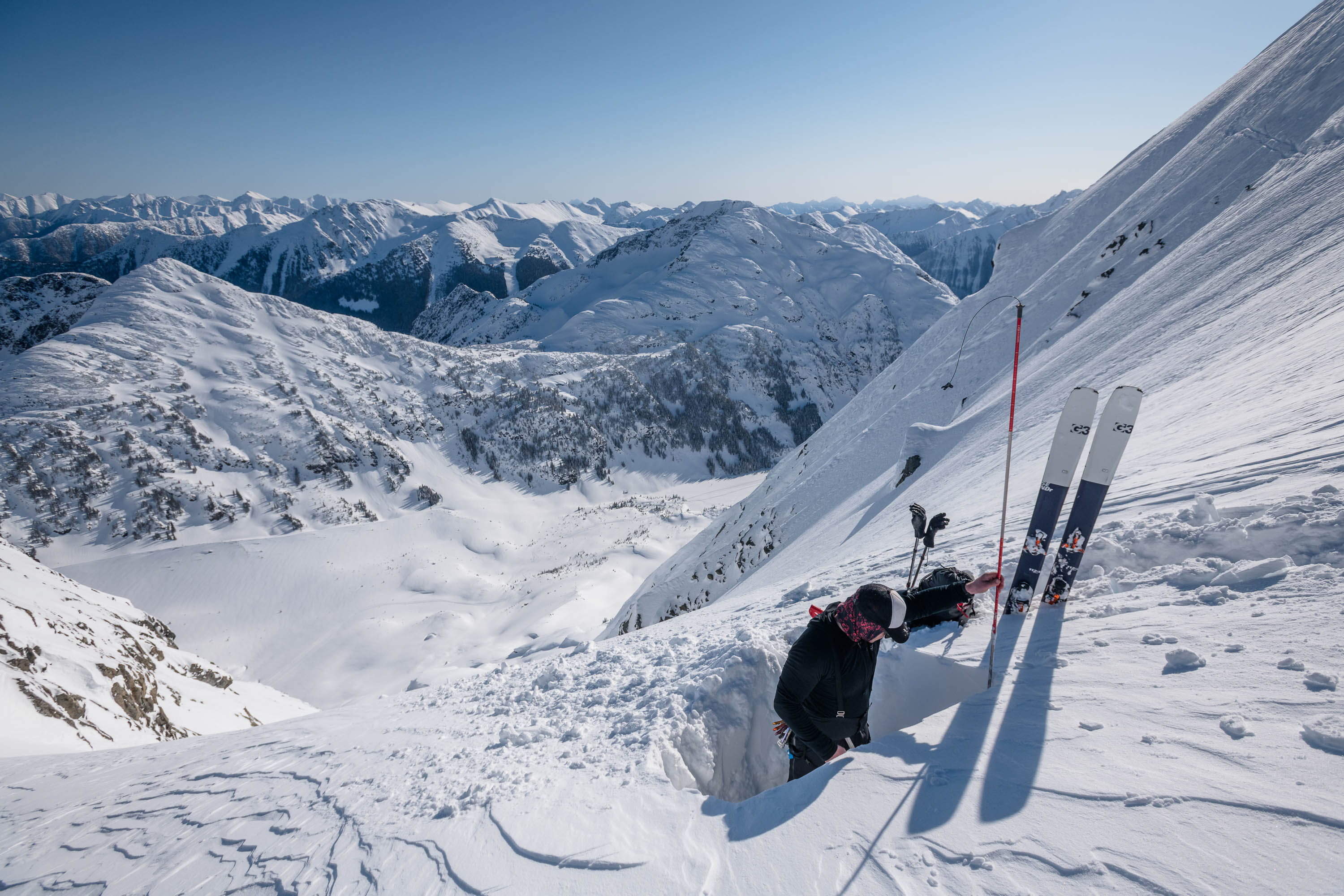
There’s no handbook to staying safe while shooting snow sports in the backcountry, so our athlete and photographer, Reuben Krabbe, started to pen one himself. What do you think we can add? What did we miss?
DO
Shoot from points of safety.
Determine where avalanches or cornice falls could happen and only shoot from points that would keep you safe from those areas.
Ask the athlete if they would ski the line regardless even if there was no camera.
If the answer is no, you may be accepting too much risk.

Leave time for the athlete to visualize the final line.
Athletes often need to change their route to match the photographer’s angle. Make sure they are able to visualize multiple scenarios within that line before they take the plunge.

Secure your bag to the slope in steep terrain.
Dig a hole big enough for your bag, then jam a ski pole through the shoulder strap to secure it. This will hold the bag in place amidst falling debris or if you accidentally bump your bag.
Make a plan and talk about objectives.
Especially in big mountain terrain where timing is everything, make sure all groups in the party are aware of the plan in order to avoid mistakes. If you plan to dig pits and have communicated that plan to the group, no one will feel like they’re slowing down the group when they start a pit.

Do beacon drills with and without your electronics.
Carrying your camera gear, go pro, or cell phone on your person can interfere with both transmit and receive functions of your beacon. Learn if they need to be turned off in the case of an avalanche, and, if there are better places to carry each item. IE: When I carry a large VHF radio, I use a mic on a chord so the radio can live in my backpack. Otherwise, the VHF on my chest would cause signal interference on my beacon’s transmit functions.
Tell younger or newer athletes to speak up.
In media production, younger or newer athletes can feel intimidated in the group decision making process. However, their opinions are as important as everyone else’s. Tell them to speak up and to ask questions in order to keep everyone safe.

DON'T
Don’t Rush onto the first lines of the day without your due diligence on snow science.
If you are choosing between daylight or digging a pit, you should always choose the pit. The snow isn’t safe just because the light is firing. Leave your house early enough to accommodate all your plans.

Don’t lose balance.
Looking through a lens in steep terrain with one eye shut is going to impact your ability to balance. If possible, drop to your hip so you can’t accidentally find yourself tomahawking down the mountain.

Don’t save weight by compromising safety.
Just because you’re carrying a camera doesn’t mean you shouldn’t have your own first aid kit dialed. I will occasionally delegate that crew members other than myself will carry first aid. However, you should have your own kit dialed.
Don’t keep your camera around your neck if you’re on a slope.
If there is even a chance of avalanche, a camera’s cord would make a pretty perfect choke cord if you got caught up in it. Keep it double wrapped around your right wrist, or slung over your shoulder.
Don’t forget about your second athlete’s location.
If you’re working with two skiers you may find yourself below one athlete and above the other. Always be aware of where everyone is. Make sure one athlete’s movements don’t accidentally cause problems for the other athlete, and make sure your current shot doesn’t stuff out your second athlete.

Don’t underestimate runout zones for barbie angles.
Avalanches, ice fall, and cornice fall have an amazing ability to travel across flat terrain after coming down the mountain. If you’re a numbers person, the number you should remember is 2.5X the height of the slope. You can also use clues of terrain and trees to see where things have run, then give yourself even more space.

Don’t forget, you’re the first responder.
If you’re a pair, you’re the only responder. Even if you’re a trio you still might be the only responder. Have your bag clean and quick to pick up and skis on your feet. If an avalanche comes down you should have your bag on and beacon out in seconds, not minutes.






